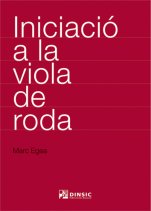Iniciació a la viola de roda

Inside Pages
Author/Composer
Field
Music Schools and Conservatoires Elementary Level
Collection
Instruments tradicionals catalans (Mètodes) Nr. 3
Language
Format
Book
Contents
viola de roda, belonging to all times, different countries and of all different kinds as refers their quality. But there isn't any neither in Catalonia nor in the rest of the Spanish State apart from the one published by Faustino Santalices in 1956.
As the number of
viola de roda players and interested in learning to play this instrument is rising, I think it is justified to say the publication of this method, whose purpose is to offer a methodical and disciplined learning of this odd, complex and bizarre instrument, was necessary.
The structure of this method is quite simple. There are 17 lessons. Except for the first and the last one, which only contain mechanisms, and the penultimate, that contains some piece of advices on scales as well as a short introduction to modes, all other lessons explain a different tonality with the aid of some exercises, one or several crank beats and finally, as a repertoire, some pieces of several (popular and traditional) authors from all over Europe. The end includes two appendices: one contains all crank beats explained in this method, the other one several pieces, some of which are written for several voices.
Fingerings are only included in exercises. I think it is important that the student tries to find out the best fingerings for the repertoire songs by himself. There are also very few rhythmic notations. The only notations made appear in certain cases to reinforce the previous explanation.
There is enough work in these 17 lessons to fill several years with it. The only thing the student has to do is being patient and avoid going on to the next lesson until he hasn't solved all exercises of the previous. I am aware of the fact that a student may interrupt a lesson during a certain time for several reasons, such as learning other repertoire by himself (which I highly recommend), composing, rehearsing the pieces of the group he plays with, etc.
The sheer continuous and persistent attention its regulation requires makes the
viola de roda a special instrument. But one can add as many reasons as one wants, such as the fact that the majority is not used to its odd sonority or that it doesn't belong to the so-called classical instruments anymore, etc.
Therefore I ask the student in advance to be patient, not only when learning these lessons but also when playing his instrument, his
viola de roda. And if he can think of any suggestion to improve this method, I should be grateful if he could let me know. If a new player can benefit from this method by reaching an acceptable level when playing repertoire, no matter if it is traditional or of any other kind, the effort won't have been in vain.
Finally, I want to express my agreement to Bibiana for her infinite patience, to Sedo, the luthier, for his good and constant disposal, to Cristina for the corrections, to Isidre for his generosity when arranging these pages and to Xurxo for helping me with the last details. Beyond all commonplaces, this method would not have been possible without their help.
Marc Egea
Instruments
Hurdy-gurdyTechnical Specifications
Measurements
21 x 29,7 cm, vertical
Binding
Spiral-bound
Number of Pages
116
ISMN
979-0-69210-514-5
Editor
DINSIC Publicacions Musicals
Also collaborating:
Cover Designer
Bernat Casso









